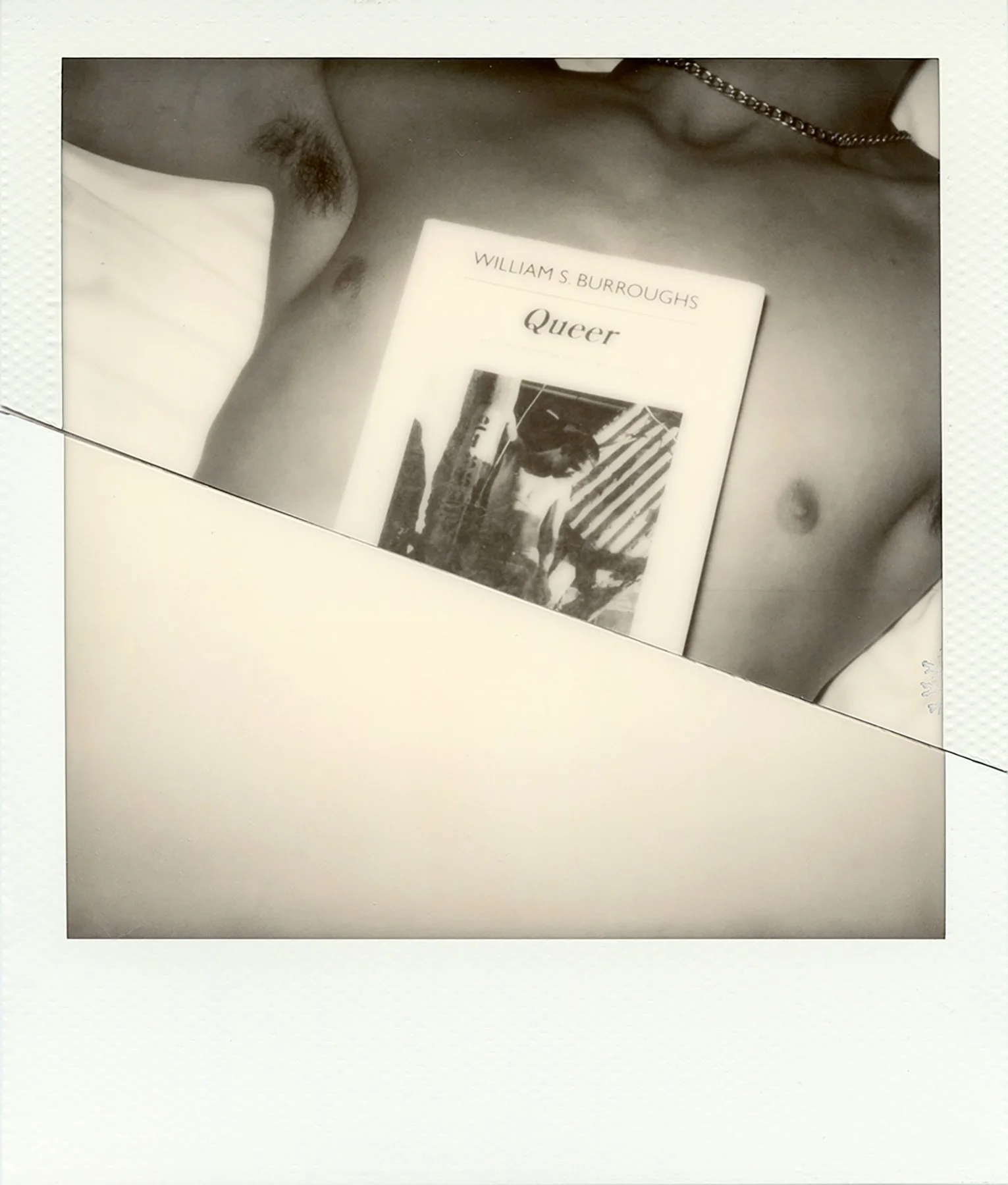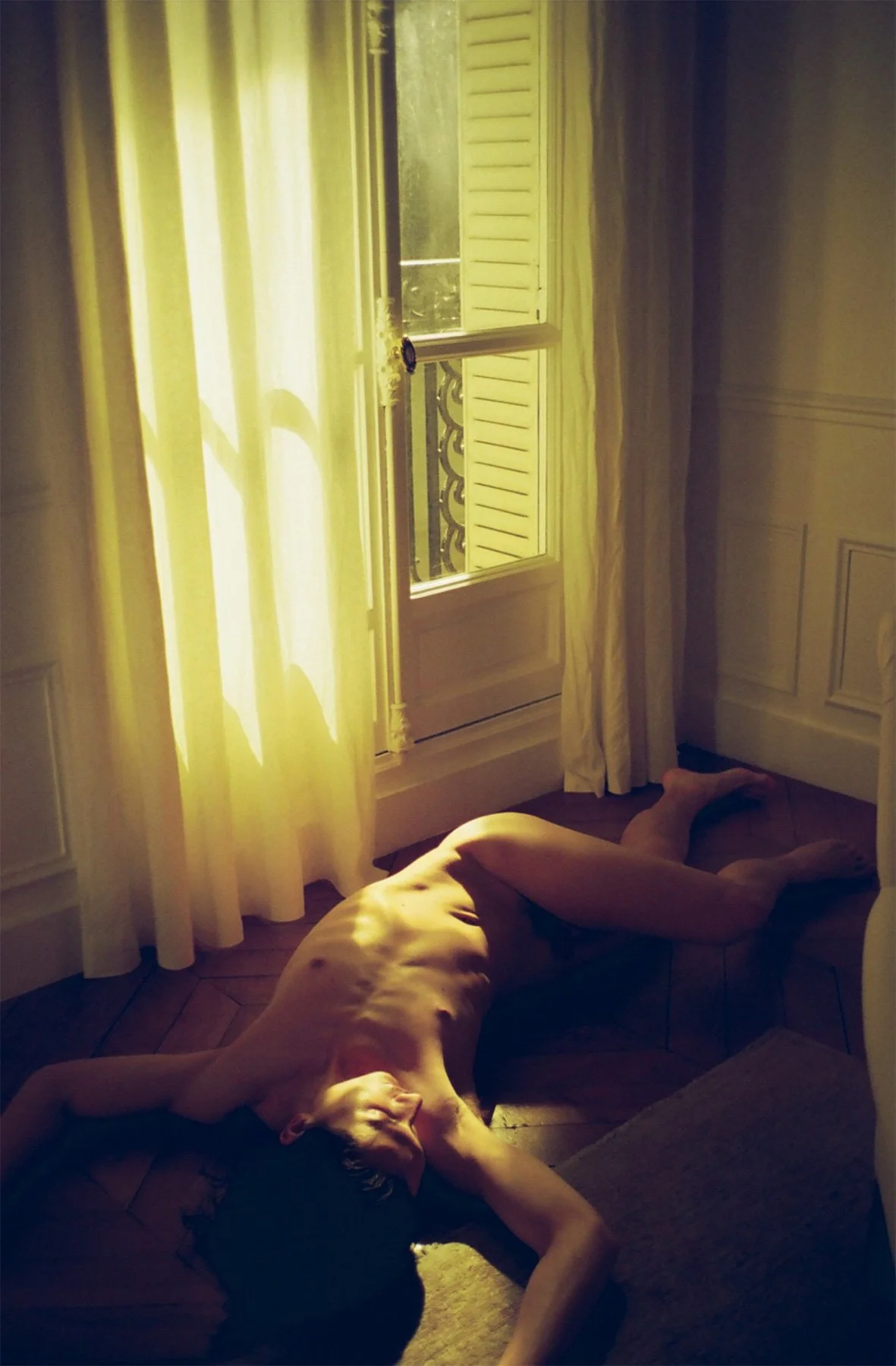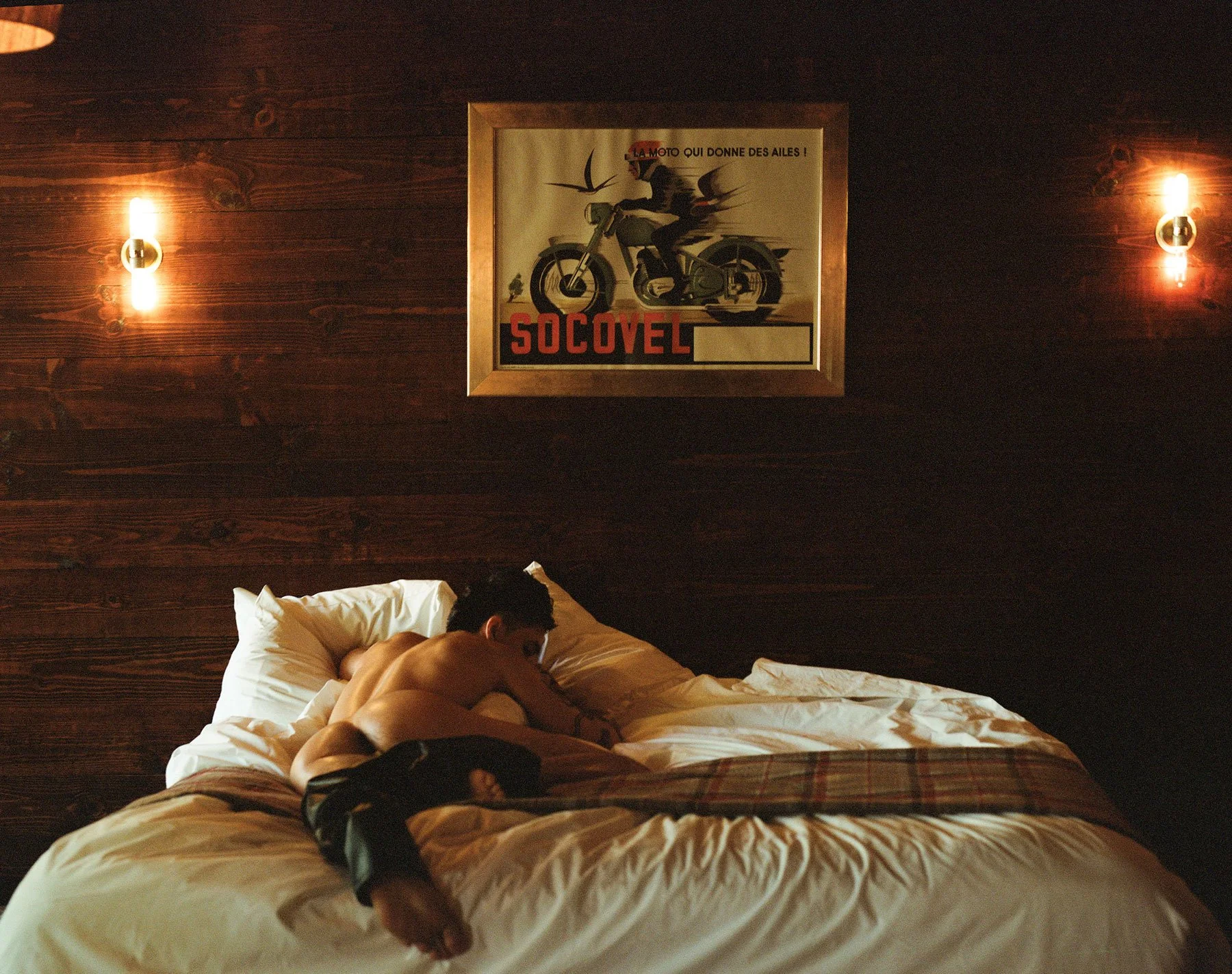Peace is the Possibility of You
In the foreword to Peter Hujar’s 1976 book Portraits in Life and Death, Susan Sontag writes that photography “converts the whole world into a cemetery.” If that is the case, then the exhibition review, I suppose, is a eulogy.
The following is my attempt to engage with the exhibition My Romantic Ideal in a way that evades such cold finality. Curated by Russian artist, writer, and dissident Slava Mogutin at the Bureau of General Services—Queer Division, housed within the Lesbian, Gay, Bisexual and Transgender Community Center, the show brings together work from 28 contemporary photographers to create an intergenerational and necessarily contradictory vision of queer love and desire.
In all honesty, my first response to the exhibition was, if not quite anger, at least indignation. The curatorial statement had promised:
This collection of work from 28 emerging and established photographers—each with their unique vision, background, and experience—offers a kaleidoscopic view into the multifaceted and often contradictory nature of queer romance . . . gather[ing] a selection of artists whose work resonates with the complexities of queer love, desire, and identity in their many forms.
And yet, despite their striking beauty, I was faced with the work of 28 primarily masc photographers turning the camera on masc-presenting subjects. That’s not to say that an exhibition of queer art cannot focus on one particular community, but the gap between the curatorial framing and the show itself was jarring. Its focus on writing romanticism, domesticity, and care—characteristics so integral to the legacy of lesbian culture—into gay culture, without any regard for the role of queer/trans women in this process, was a twist of the knife.
However, my intent in writing this is not to sow more animosity and division within the queer community. Setting aside the stated scope of the exhibition, My Romantic Ideal speaks in a register that is at once urgent and gentle, articulating a dual sense of belonging and placelessness, memory and becoming. In his landmark 2009 book Cruising Utopia, queer theorist José Esteban Muñoz argues that queerness is not yet here, but a future-bound, profoundly utopian way of moving through the world. This relentless refusal to stand still is present in the works presented at BGSQD; to review the work, an inherently past-oriented act that posits the photographer as recording-angel of death, therefore seems beside the point.[1]
Scrapping my original notes contemplating power dynamics, the origins and resurgence of romanticism, and the shortcomings of respectability politics and the gay marriage movement, I revisited the show, this time determined to find points of contact rather than degrees of separation. I tried to close the critical distance between my gaze and Mogutin’s, to sidestep the compare-and-contrast impulse and enter the messy tenderness of the images laid out before me.
The exhibition exemplifies what Mogutin does best: construct a powerfully cogent and cohesive vision of collective queer beauty rooted firmly in his own experiences and desires. The show eschews the vacant optimism latent in attempts to survey the entire gamut of queer love and lust in one fell swoop. Meeting Mogutin on his own terms, I strived to lay the groundwork for a rhizomatic queer utopia, interweaving his vision with mine, as well as those of queer artists and writers before me.
The sun is watery warm
our voices
seem too loud for this small yard
too tentative for women
so in love
. . .
I do not know when
we shall laugh again
but next week
we will spade up another plot
for this spring’s seeding.[2]
It’s the end of pomegranate season. The bees trip up a staircase of ribs, waiting to curdle. One follicle (left ovary) is progressing much faster than the rest. We’ll have to let that one go. (Where will she go? I ask. In the absence of ancestors, immaculate conception is the only origin story, you reply, dodging the question again.) The slow stench of fermented honey clouds the shadow we burned into the mountain, crafting fluid phrases from decades-old smoke wafting from behind the house that’s not ours. The rain falls through October and when the eclipse comes the bruises on my stomach have gone. The jagged pool of early morning stragglers turns petals to stone.
I regret that all the flowers I laid on you were already dead.
In my back pocket is a love note
with every word you wish you’d said.
[. . .]
Yes, I know every secret you thought
too dark to tell me, and love you more
for everything you feared might make me love you less.[3]
Skin hair nails the imprint of your fresh-stained sheets bite marks waiting to scar. Breath seeps in between frames gasping for exposure before the shutter cleaves us in two. Do you always measure distance in coyotes? (Is ferality an escape from domestication or exclusion from it?) Half-rotted root tendrils snag on ripped silk and lodge themselves in bare bone, partial objects dolled up in scraps of flesh. I watch enviously as arachnean veins crawl beneath your skin. Mine is a body without organs, you say, unblinking as they take me away.
[. . .] I am amazed by peace
It is this possibility of you
asleep
and breathing in the quiet air[4]
At the first failed attempt to start something new our flesh shattered into ashes flecked with tiny knives. We drank the dry dust as summer rain restored our rotting paradise under the mulberry tree by the river. I opened my eyes hair slicked with mud to find ghosts stewing in darling despair, flooding the shallow bank. (I don’t believe in ghosts, although I have them, the river said.) You slept until the sun came out, then floated up out of your body and looked around.
It is far more romantic to pretend that in such a hellhole, beauty is always meaningful; but the river was still brown, the mulberries were still white, the dust was dust, and that was enough.
I have just said
Something
Ridiculous to you
And in response,
Your glorious laughter.
These are the days
The sun
Is swimming back
To the east
And the light on the water
Gleams
As never, it seems, before.[5]
The seagulls make lazy circles in the sky, royal in their own right, but nonetheless docile. You wrest kelp from my salt-slicked hair as I pick pollen from a wasp’s cold grasp. Between sweet bloody mouthfuls of stonefruit swallowed whole you recall the ice cream your mother brought home and plot the downfall of the imposter peddling placebos, sugar water spiked with vinegar. I listen, mourn wild grapes rotting in the sun, index stones until the sands run out.
We straggle back to an empty house built on a cracked foundation over a pit of snakes—but the kind that protects you, the weaver told me. I know already who wants to buy it, sell it, make it disappear.[6] Someday we’ll build our own, you say. I was warned never to dream of spiders, but the one from my bookshelf has followed us home.
My Romantic Ideal is on view at the Bureau of General Services—Queer Division from May 1 through August 31, 2025.
[1] Susan Sontag, introduction to Portraits in Life and Death by Peter Hujar (Da Capo, 1976).
[2] Audre Lorde, “Walking Our Boundaries,” in The Black Unicorn: Poems, rev. ed. (W. W. Norton & Company, 1995), 38.
[3] Andrea Gibson, “Love Letter from the Afterlife,” n.d.
[4] June Jordan, “Poem for My Love” from Directed by Desire: The Collected Poems of June Jordan, ed. Jan Heller Levi and Sara Miles (Copper Canyon: 2005), 147.
[5] Mary Oliver, “I Have Just Said,” n.d.
[6] Adrienne Rich, “What Kind of Times Are These,” in Dark Fields of the Republic: Poems 1991–1995 (W. W. Norton & Company, 1995), 3.






